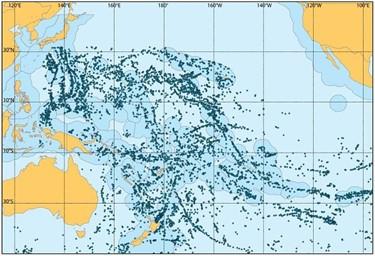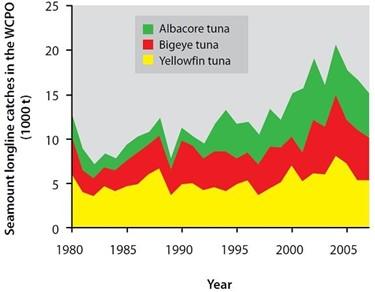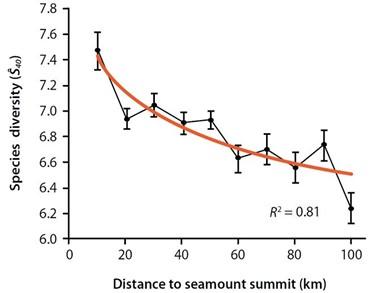Exploring the role of seamounts in the Pacific Ocean to understand the implications for fisheries management
Seamounts are considered important in the conservation of marine ecosystems as they often shelter high biodiversity of organisms, particularly benthic life. However, little is known about their importance for pelagic species such as tuna. Fishermen have reported exceptional tuna catches on some seamounts, while other seamounts do not seem to favour catches. Because of their potential influence on fishing efficiency, their susceptibility to disturbance and their high potential for protection, it is important to acquire a better knowledge on seamounts.

More than 4000 seamounts have been recorded in the exclusive economic zone (EEZs) and in some of the international waters of the western and central Pacific Ocean (WCPO). Some of them are extremely deep and very few have been studied or even precisely located.

Fishing around seamounts
We have carried out studies, based on fishing data and seamount location, to examine the impact of seamounts on tuna longline catch at the Pacific Ocean scale. While this work has shown that catch rates of tuna species and other pelagic species were higher in the vicinity of some seamount summits, the catches were significantly lower for other seamount locations. This has important implications for tuna fisheries management, particularly for yellowfin and bigeye. “For example, when overall population abundances decline, fishing vessels may concentrate on areas where fish remain. Such aggregation areas may promote what fisheries scientists call hyperstability of catch rates – meaning that the catch rates remain high in these areas. Whilst this is generally a positive for the viability of the tuna industry, it is important that such hyperstability does not hide real trends in the data that might be indicating a decline in the status and viability of tuna stocks.

Biodiversity around seamounts
The role of seamounts in aggregating large pelagic biodiversity has been investigated to identify pelagic species that are associated with seamounts. Based on observer data and seamount location, these analyses suggest that seamounts, mainly within 30-40 km from their summits, are hotspots of pelagic biodiversity since they showed consistent higher species richness than coastal or oceanic areas. Many species have been observed to aggregate close to seamount features, such as blue shark, oceanic whitetip shark, swordfish, moonfish and sunfish, but also albatross and dolphins. These results suggest that seamounts are potentially areas of special interest for conservation, particularly since many occur within the EEZs of SPC member countries. Management of oceanic ecosystems is considered easier within the boundaries of EEZs than in the high seas.
